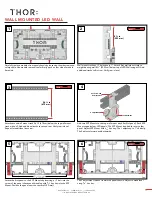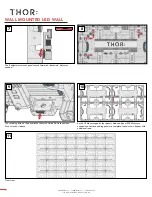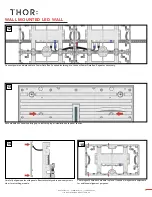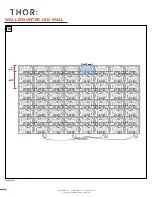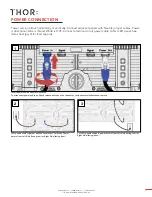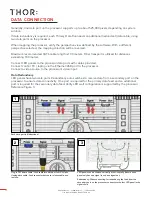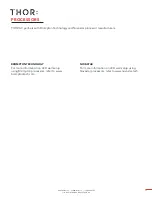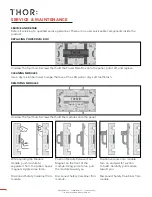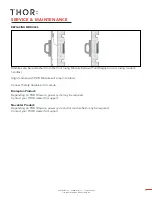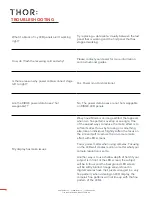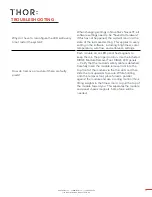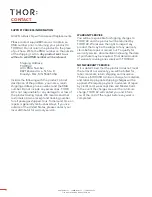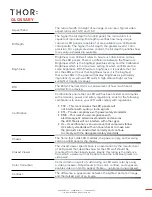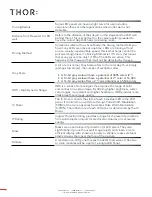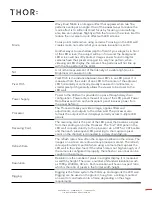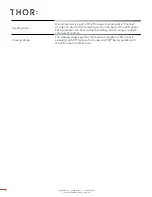
www.THORav.us | [email protected] | (763) 999-4253
™ & ® 2018 THOR AV. © 2022 THOR AV.
33
Moiré
Wavy lines! Moiré is an image artifact that appears when two fine
patterns overlap at an angle. One of the easiest ways to reduce the
moiré effect is to soften its direct focus by focusing on something
else, like an individual. Slightly soften the focus on the screen itself to
reduce the on-camera moiré effect with LED screens.
Focus points matter when using cameras. Focusing on the LED wall
creates moiré no matter what your camera resolution is set to.
Another way is to use shallow depth of field if your subject is in front
of the LED screen; the subject will be in focus and the background
LED screen will be softly blurred. Image sensors found in digital
cameras have their pixels arranged in a very fine pattern; when
videoing an LED display, the camera’s fine patterns will not line up
with the fine pattern of the LED’s.
Nit
A nit is the measurement of the intensity of a visible light source.
Brightness is measured in nits.
Pixel Pitch
Pixel Pitch is the distance between two LED’s in an LED panel. It is
measured from the center of one LED to the center of the adjacent
LED horizontally or vertically. Usually measured in millimeters, a
smaller pixel pitch generally allows the viewer to be closer to the
LED wall.
Power Supply
Power to the LED wall is provided in a pass-through daisy chain
configuration. Power enters the wall at one of the LED panel’s Power
Data Boxes and then each subsequent panel receives power from
the panel before it.
Processor
The Processor takes your video image, applies filters and
adjustments, and outputs to the video wall. The processor also
formats the output so that it displays correctly across multiple LED
panels.
Receiving Card
The receiving card is the part of the LED panel that receives a signal
from the sending card in the Processor. The “first” LED panel in the
LED wall connects directly to the processor via a CAT5 or CAT6 cable
and then each subsequent LED panel (up to the maximum pixel
count on the channel) is connected in a daisy chain fashion.
Refresh Rate
The refresh rate is how often the image is redrawn on the screen. The
images on a screen are redrawn many times per second. The refresh
rate is particularly important when using a camera that captures the
LED wall in the video feed. If the refresh rate is not high enough, or if
the camera is configured improperly, the refresh or scan lines can be
caught on the camera.
Resolution
Resolution is the number of pixels in a digital display. It is measured
as width by height. There are a number of standard resolutions such
as 1080p, WUXGA, 4K, etc. Each resolution will have an aspect ratio
which is the ratio of pixels in the format width:height.
Rigging
Rigging is the frame system that holds up and supports the LED wall.
Rigging can be used on the ground, hung from a ceiling, mounted
on a wall or constructed into a frame depending on the stage
requirements.

